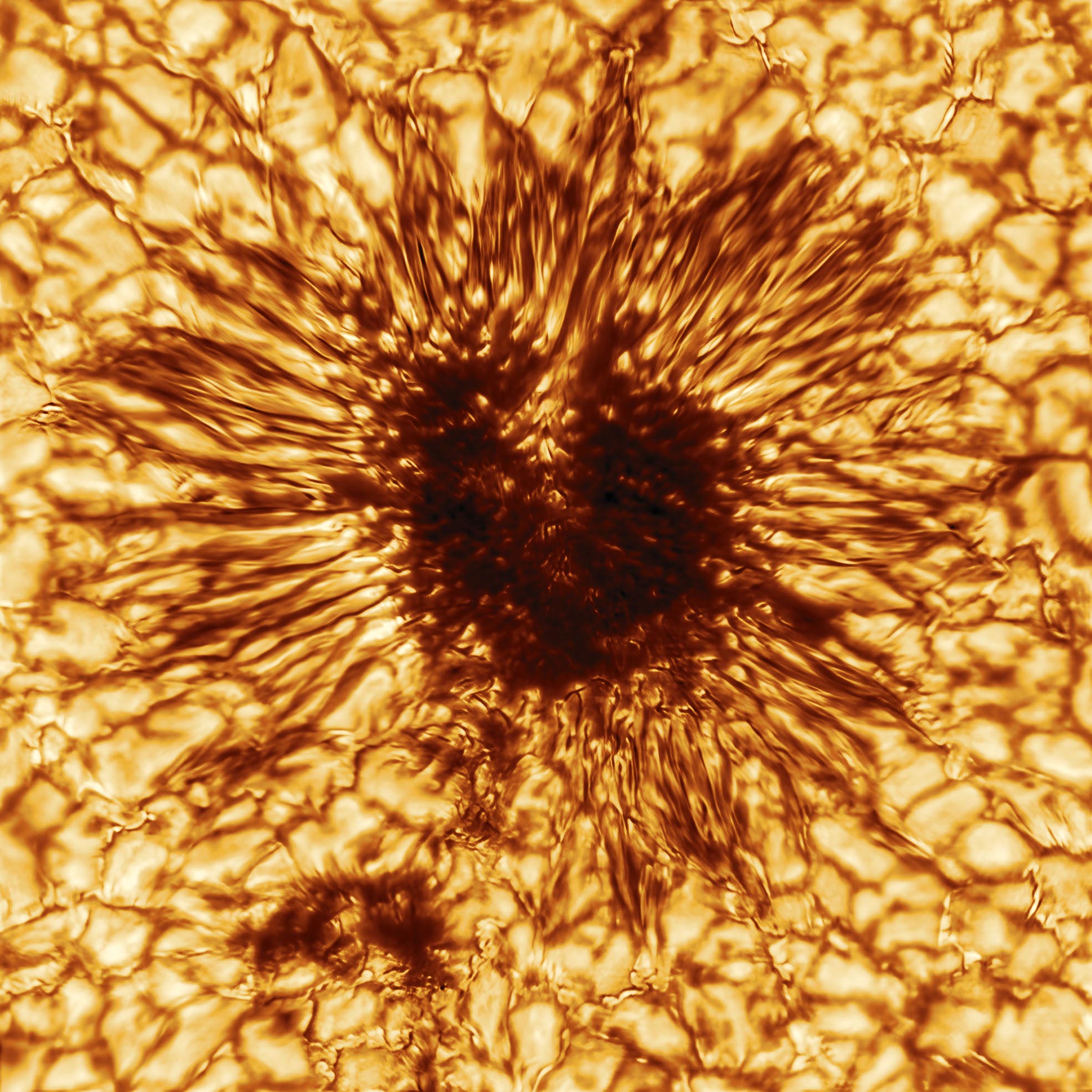| Manu | Date: Wednesday, 09-December-2020, 6:48 AM | Message # 1 |

--dragon lord--
Group: undead
Messages: 13911
Status: Offline
| 
This is the first sunspot image taken on Jan. 28, 2020, by the NSF’s Inouye Solar Telescope’s Wave Front Correction context viewer. The image reveals striking details of the sunspot’s structure as seen at the sun’s surface. The sunspot is sculpted by a convergence of intense magnetic fields and hot gas boiling up from below. This image uses a warm palette of red and orange, but the context viewer took this sunspot image at the wavelength of 530 nanometers — in the greenish-yellow part of the visible spectrum. This is not the same naked eye sunspot group visible on the sun in late November and early December 2020. Credit: NSO/AURA/NSF
The U.S. NSF’s Daniel K. Inouye Solar Telescope just released its first image of a sunspot. The telescope’s four-meter primary mirror will give the best views of the Sun from Earth throughout the next solar cycle. This image is an indication of the telescope’s advanced optics. The image is released along with the first of a series of Inouye-related articles featured in the Solar Physics Journal.
The world’s largest solar observatory, the U.S. National Science Foundation’s Daniel K. Inouye Solar Telescope, just released its first image of a sunspot. Although the telescope is still in the final phases of completion, the image is an indication of how the telescope’s advanced optics and four-meter primary mirror will give scientists the best view of the Sun from Earth throughout the next solar cycle.
The image, taken January 28, 2020, is not the same naked eye sunspot currently visible on the Sun. This sunspot image accompanies a new paper by Dr. Thomas Rimmele and his team. Rimmele is the associate director at NSF’s National Solar Observatory (NSO), the organization responsible for building and operating the Inouye Solar Telescope. The paper is the first in a series of Inouye-related articles featured in Solar Physics. The paper details the optics, mechanical systems, instruments, operational plans and scientific objectives of the Inouye Solar Telescope. Solar Physics will publish the remaining papers in early 2021.
“The sunspot image achieves a spatial resolution about 2.5 times higher than ever previously achieved, showing magnetic structures as small as 20 kilometers on the surface of the sun,” said Rimmele.
The image reveals striking details of the sunspot’s structure as seen at the Sun’s surface. The streaky appearance of hot and cool gas spidering out from the darker center is the result of sculpting by a convergence of intense magnetic fields and hot gasses boiling up from below.
The concentration of magnetic fields in this dark region suppresses heat within the Sun from reaching the surface. Although the dark area of the sunspot is cooler than the surrounding area of the Sun, it is still extremely hot with a temperature of more than 7,500 degrees Fahrenheit.

Read more/full article/source - https://scitechdaily.com/see-the....lescope
|
| |
| |















